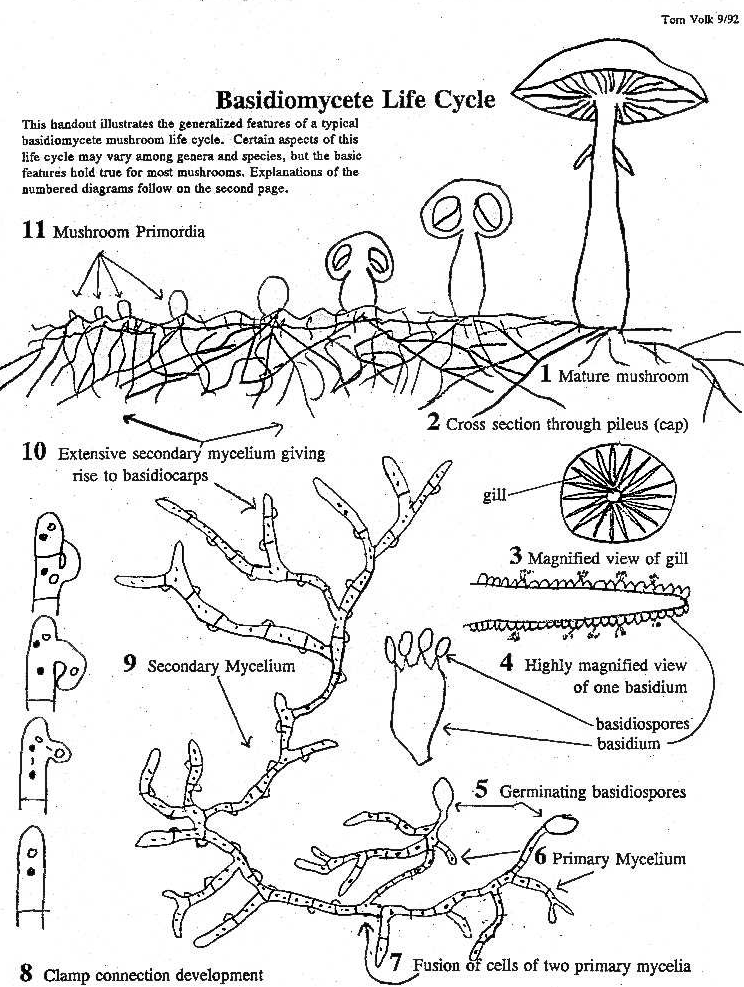Reproduction
The reproduction of the Amanita phalloides falls under the general reproduction of the phylum Basidiomycota. The major defining trait that separates these fungus from others is the production of the basidium or basidia if used in plurality. These basidia produce sexual spores that are used to create more basidiomycota. Secondly, this group possesses the ability for plasmogamy and karyogamy. These two forms of sexual processes occur in fungi of opposite mating types. Plasmogamy is the process in which the hyphae walls fuse together allowing them to coexist while karyogamy is when the nuclei of the fungi fuse together to create one whole nuclei. Below take a closer look at the complete life cycle which will give a better understanding and a visual aid in order to further develop knowledge of the life cycle of the Amanita phalloides.

Photo Credit given to: Tom Volk
The process begins with two fungi of opposite mating types coming together, undergoing the process of plasmogamy, which then forms the basidiocarp, or mushroom that most people associate with fungus. This basidiocarp forms gills on the underside of the mushroom, but in the Death cap's case, the gills are not attached to the cap. These gills are lined with basidia. The basdia then undergo karyogamy, or the fusing of two fungal nuclei to create one. Meiosis then takes control forming the basidium that contains basidiospores. This basidiospore disperses the spores into the air and on other critters that run around the forest floor to spread the fungal growth to other parts of the habitat. There are really no special mating rituals the Amanita phalloides goes through to initiate the growth or to speed up growth.